NorthEast Radio Watch 3/24/2025: WJIB Makes Its Move
In this week’s issue… New signal for Boston's WJIB - "New Standards" changes stations - New home for Maine FM - Remembering NYC's Diaz, Maine's "Mr. Mike," Albany's McGrath, Rochester's Petschke
Text and photos by SCOTT FYBUSH
“They don’t build them like that anymore.”
We say that at a lot of the transmitter sites we visit…but few of those are as majestic as the Art Deco gem that is Detroit’s WJR transmitter building, a few miles south of downtown Detroit in the downriver “Riverview” area.
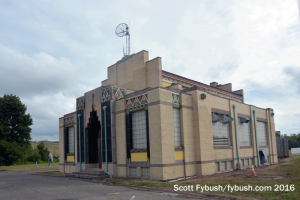 |
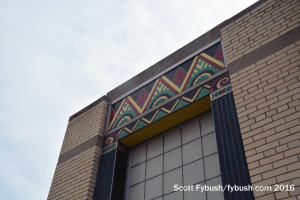 |
When WJR owner George A. Richards built down here in the early 1930s, this was the first Detroit AM station to go “Downriver,” and while it would eventually be joined by a bunch of big directional arrays down here, WJR’s 50,000-watt non-directional signal is still the big gun in town.
It also happens to have been one of the last remaining class I-A clear channel facilities we’d never visited inside, so it was especially exciting to be able to spend some time there as our August “Medium Trip” wound down.
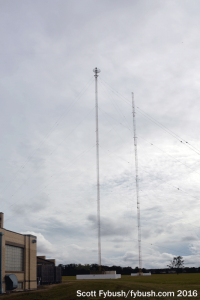 |
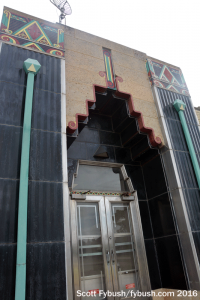 |
 |
When it was new in the early 1930s, WJR had one of the first Blaw-Knox diamond-shaped towers, which must have been quite the sight for travelers headed from Detroit to Toledo on nearby US 24.
If they’d turned on to Sibley Road back then, they’d have seen pretty much the same thing we see 80 years later – a gorgeous Art Deco cathedral of radio that rises two stories inside the front entryway.
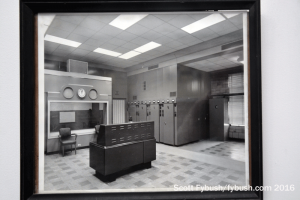
Today, there are three generations of transmitter represented on the sides of the big transmitter room – a Continental 317C on one side, and on the other a Harris/Gates MW50 next to the current main transmitter, a Harris DX50.
In the middle of the room, there’s still a control console from an earlier generation of transmitter here, backing up to a set of racks for STL, processing and remote control.
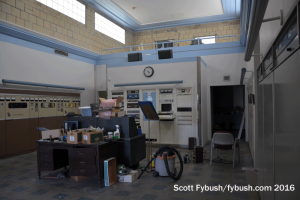 |
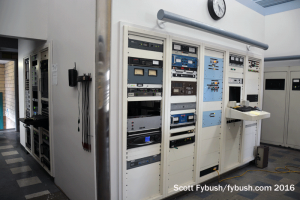 |
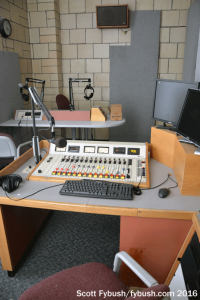
At some point along the way, the big transmitter room was cut down somewhat with a dropped ceiling, but it’s since been removed, allowing natural light to stream in from glass-block windows high above – and allowing for some neat views of the room from the balcony that sits above the control racks.
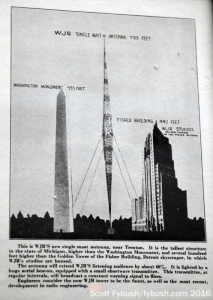
One of the side rooms next to the front door has been converted from engineering office space to a backup studio; in case of emergency, WJR can swap out its Fisher Building studios (which we showed you last week) for this space here.
Outside, the original 733-foot Blaw-Knox from 1935 didn’t last long; a storm in 1940 took it down, and it was replaced with the 700-foot guyed tower that sits here today. (The photo at the top of the page is a little deceptive; the STL tower here is much shorter, but also much closer to the building.)
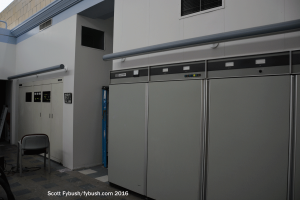 |
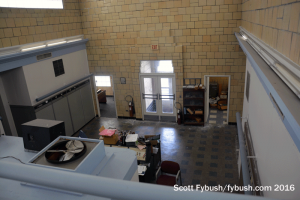 |
After a delightful day at the Henry Ford/Greenfield Village complex (which is an absolute don’t-miss destination), our Detroit trip wrapped up with a pair of late-afternoon studio visits at opposite ends of town.
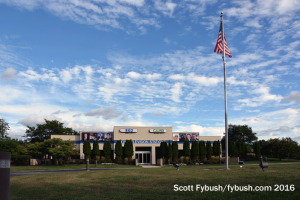 |
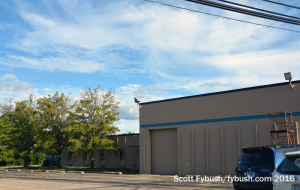 |
Back in 1965, Kaiser Broadcasting put WKBD-TV (Channel 50) on the air as part of its chain of independent stations around the country, operating from a small studio/transmitter building out on 11 Mile Road in what was then deepest suburban Southfield.
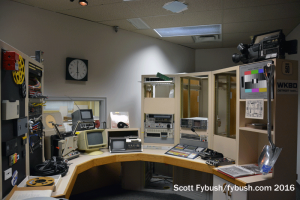 |
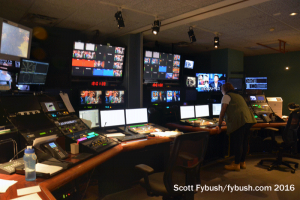 |
Things have changed pretty dramatically out here over the years that followed: WKBD eventually became a Fox affiliate, and then went to UPN (and subsequently CW) in the big affiliation shuffles of 1995. When Fox went to WJBK (Channel 2) in that shuffle, it left CBS hanging – and that eventually forced CBS to buy another obscure UHF independent, WGPR-TV (Channel 62), and turn it into an unlikely CBS O&O under the WWJ-TV callsign.
The merger of UPN owner Viacom into CBS a few years later made WWJ-TV and WKBD sister stations, and WWJ-TV ended up out here on 11 Mile, sharing the newer building that WKBD built in the 1980s.
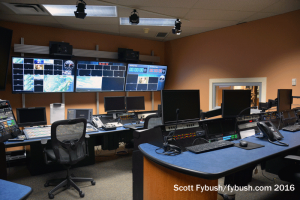 |
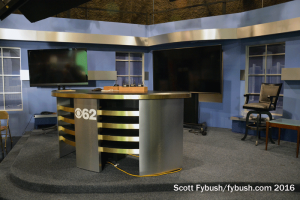 |
Back in the day, WKBD did a nightly 10 PM newscast out here, and very briefly added an 11 PM newscast for WWJ-TV, but since 2002 there’s been no full-fledged news operation in what’s now a somewhat empty building as a result.
The original WKBD master control space in the new building is now a little mini-museum of older gear from channel 50’s history; down the hall, there’s a newer master control to handle both WKBD and WWJ-TV. The HD production control room here handles nightly weather updates that air on both stations, as well as morning weather cut-ins on WWJ-TV; those, plus a weekly public-affairs show, are pretty much all that comes out of here these days.
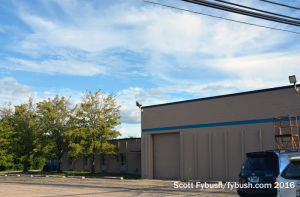 |
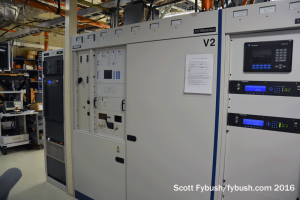 |
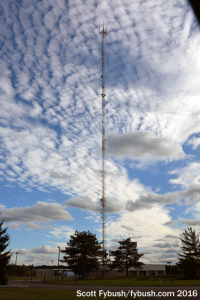
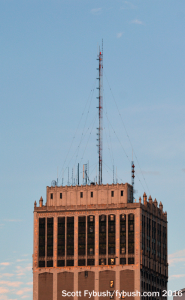
When WKBD built its new offices and studios in the 1980s, they kept the old building next door as a transmitter building and storage area.
WKBD’s digital transmitter, now on RF 14, feeds the big tower out back from here. At one time, this tower was also home to independent WXON (Channel 20, now WMYD) and PBS outlet WTVS (Channel 56), but in the DTV era those stations moved their signals to a new tower just off 8 Mile Road at the former WWJ (950) transmitter site. (That new tower, which we didn’t visit on this trip, is also home to WWJ-TV.) Today, the only other TV occupants out here on 11 Mile are ion’s WPXD (Channel 31) and TCT’s religious WDWO-CD (Channel 18).
From here, we head back downtown on our way out of Detroit and over to our next stops in Canada. This gives us a nice evening view of the Cadillac Tower, one of downtown’s tallest buildings, home to the transmitter of iHeart’s WMXD (92.3) and an aux for WDTW-FM (106.7) – and it takes us to our very last Detroit stop, the studios of NBC affiliate WDIV (Channel 4).
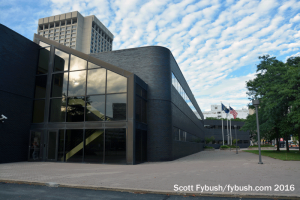 |
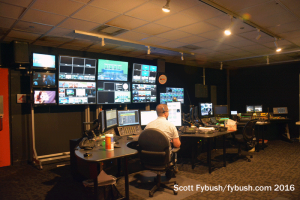 |
If you know your Detroit broadcast history, you know that channel 4 was the original WWJ-TV, the city’s first TV station in 1947. Its sale to the Post-Newsweek group in 1978 separated channel 4 from the Detroit News and WWJ radio and brought the WDIV calls to Detroit screens. Not long afterward, in 1982, WDIV moved out of its longtime home adjacent to the News and into this purpose-built facility a block away on West Lafayette.
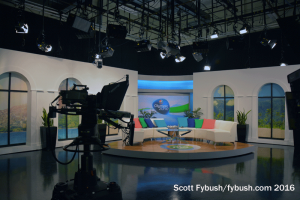 |
 |
WDIV is the only TV station in town with studios inside city limits, and it’s a nice set of studios indeed. There’s a big production studio/control room on the west side of the building, next to the main air studio, which was in Olympics mode on this particular August evening. The HD production control room is on this side of the building, too, adjacent to the news studio.
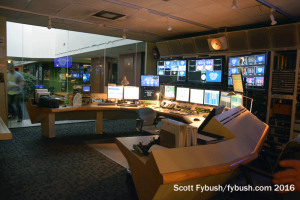 |
 |
Master control enjoys unusual pride of place here: it sits behind a nice glass wall right off the atrium lobby, with rack rooms and an engineering area behind.
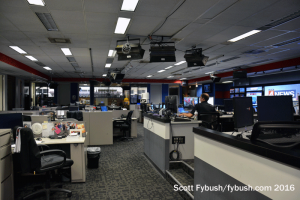 |
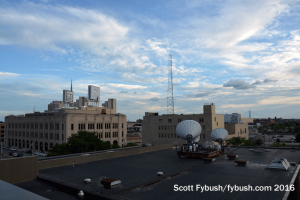 |
The newsroom is on the east side of the building, upstairs from the lobby. Unusually, WDIV also has its own multi-floor parking garage, an older structure that was incorporated into the building when it went up in the 1980s. The view from here includes a nice panorama of the old News building, now home to Quicken Loans offices, and the old WWJ studio building next door.
Thanks to WJR’s Keith Bosworth, WKBD’s Frank Maynard and WDIV’s Bill Magliocco for the tours!
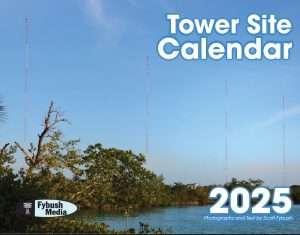
And if you don’t have your Tower Site Calendar, now’s the time!
If you’ve been waiting for the price to come down, it’s now 30 percent off!
This year’s cover is a beauty — the 100,000-watt transmitter of the Voice Of America in Marathon, right in the heart of the Florida Keys. Both the towers and the landscape are gorgeous.
And did you see? Tower Site of the Week is back, featuring this VOA site as it faces an uncertain future.
Other months feature some of our favorite images from years past, including some Canadian stations and several stations celebrating their centennials (buy the calendar to find out which ones!).
We still have a few of our own calendars left – as well as a handful of Radio Historian Calendars – and we are still shipping regularly.
The proceeds from the calendar help sustain the reporting that we do on the broadcast industry here at Fybush Media, so your purchases matter a lot to us here – and if that matters to you, now’s the time to show that support with an order of the Tower Site Calendar. (And we have the Broadcast Historian’s Calendar for 2025, too. Why not order both?)
Visit the Fybush Media Store and place your order now for the new calendar, get a great discount on previous calendars, and check out our selection of books and videos, too!
And don’t miss a big batch of Detroit IDs next Wednesday, over at our sister site, TopHour.com!
Next week: Up and down the 401
In this week’s issue… New signal for Boston's WJIB - "New Standards" changes stations - New home for Maine FM - Remembering NYC's Diaz, Maine's "Mr. Mike," Albany's McGrath, Rochester's Petschke
A look at two of the Voice of America facilities that were abruptly shuttered this month
In this week’s issue… FCC seeks rule changes - Townsquare, Cumulus close struggling stations - WIRY shuts down - Cumulus spawns "Cat Country" - Toronto's Citytv moves
In this week’s issue… Audacy cuts hit nationwide - Townsquare takes more signals silent - Buffalo's Lillis signs off - Mass Broadcasters name new HOF inductees - PA anchor sues Nexstar